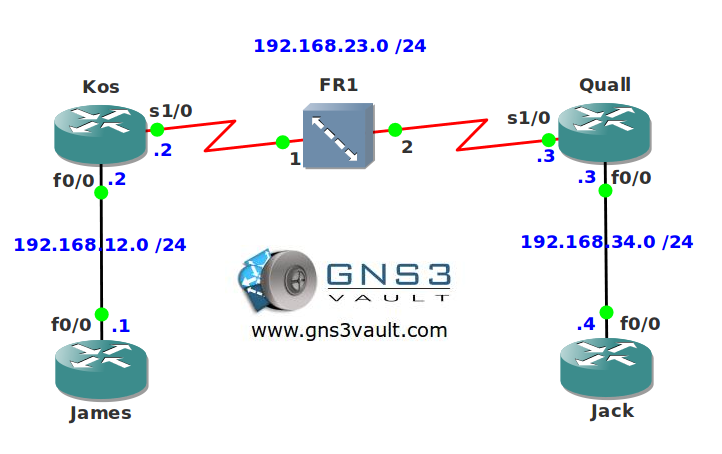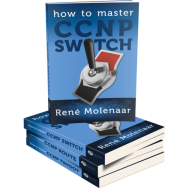Scenario:
As one of the network engineers for a large frame-relay provider in the US you are asked by your boss to configure QoS. One of your customers insists there will be authentication in the future for his frame-relay connection. You don’t have to configure authentication right now but you remember you can do this by using PPP on a frame-relay link. You do have to setup QoS right now though…
Goal:
- All IP addresses have been preconfigured for you.
- Configure Multilink PPP on the frame-relay link between router Kos and Quall.
- Classify and mark TELNET and HTTP traffic on router Kos and Quall. Use DSCP value AF21 for TELNET traffic and AF31 for HTTP traffic.
- Create a policy on router Kos and Quall with the following configuration:
- TELNET traffic should have 64Kbps of priority bandwidth.
- HTTP traffic should have 10% of the remaining bandwidth.
- Enable Link fragmentation and interleaving and ensure there is a delay of 20ms on the frame-relay link.
IOS:
c3640-jk9s-mz.124-16.bin
Topology:
You need to register to download the GNS3 Topology File. (Registration is Free!)

Video Solution:
Configuration Files
You need to register to download the GNS3 topology file. (Registration is free!)Once you are logged in you will find the configuration files right here.

The How to Master series helps you to understand complex topics like spanning-tree, VLANs, trunks, OSPF, EIGRP, BGP and more.
Written by René Molenaar - CCIE #41726


Using CBWFQ you can classify the traffic and police it as needed. To configure LFI on the Multilink interface this link should help
http://www.cisco.com/en/US/docs/ios/12_2/qos/configuration/guide/qcflfi.html
Frame-relay multilink configuration
http://www.cisco.com/en/US/docs/ios/12_0s/feature/guide/17s_mfr.html